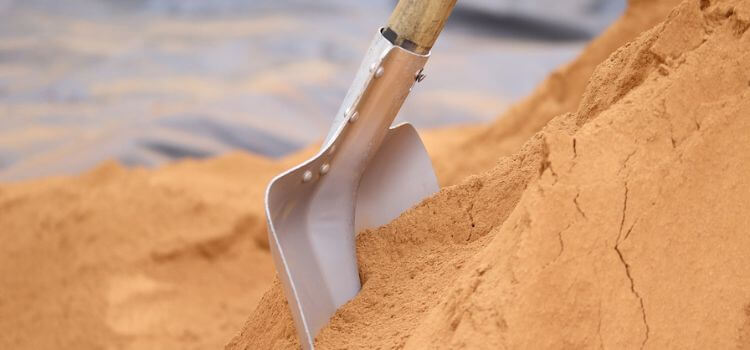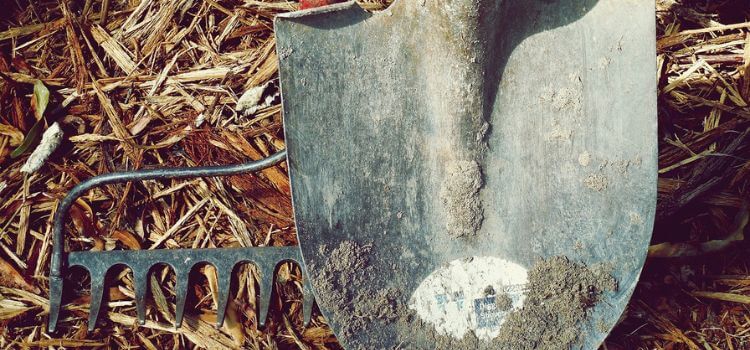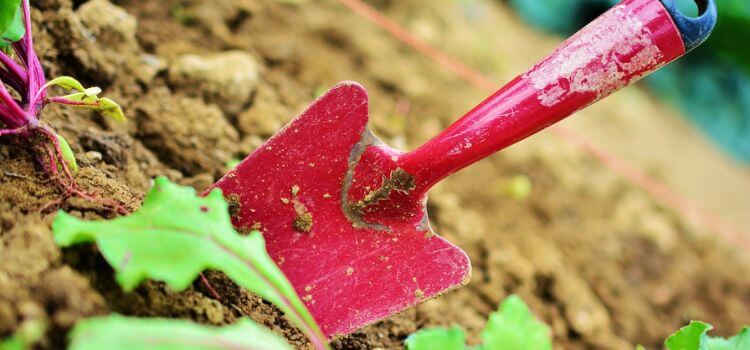As an Amazon Associate, I earn from qualifying purchases.
Gardeners use various shovels for different tasks. Common types include digging, trenching, and transplanting with shovels.
Shovels are essential tools for gardeners, each designed for specific tasks. With their pointed blades, digging shovels are perfect for breaking ground and digging holes. Trenching shovels with narrow blades are ideal for creating trenches for irrigation or planting. Transplanting shovels feature long, thin blades that allow for the gentle movement of plants without damaging their roots.
Different Types of Shovels
Understanding the function of each type helps gardeners choose the right tool for the job, ensuring efficient and effective gardening. Properly selecting and using shovels can make gardening tasks easier and more enjoyable. This guide highlights the vital types of shovels and their specific uses to help you maintain a beautiful garden.
Digging Shovels
Gardening requires the right tools, and shovels are among the most important. They come in various types, each serving a unique purpose. Knowing the different types of shovels and their uses can make gardening more accessible and fun. This guide will help you understand the various types of digging shovels and how to use them effectively.

Trenching Shovels
Trenching shovels are designed for digging narrow trenches. They have a long, narrow blade, which makes them perfect for creating irrigation channels or laying cables. The handle is usually extended to provide better leverage.
Uses of trenching shovels include:
- Creating irrigation ditches
- Laying underground cables
- Installing drainage pipes
The blade is often pointed to cut through soil easily and remove soil with precision. These shovels are great for tight spaces where other shovels might be too wide.
Pointed Shovels
Pointed shovels are versatile and can be used for a variety of tasks. The blade is triangular and sharp, allowing for easy penetration into the soil. They are ideal for digging holes and planting trees or shrubs.
- Digging holes for plants
- Turning soil
- Breaking up hard ground
The pointed tip helps cut through tough soil, allowing for precise digging and making it easier to remove rocks and roots. Gardening enthusiasts often rely on pointed shovels for their versatility.
Square Shovels
Square shovels have a flat, rectangular blade. They are best suited for moving loose materials, such as sand or gravel. The flat edge makes it easy to scoop and lift.
Uses of square shovels:
- Moving mulch
- Transferring soil
- Leveling ground
Square shovels are also great for edging garden beds. Their flat blades create clean, straight lines, which helps maintain a neat garden appearance. They are essential for tasks that require precision and control.
Scooping Shovels
Gardening is a rewarding hobby that requires the right tools to be effective. Among these tools, shovels play a crucial role in various gardening tasks. Shovels come in multiple shapes and sizes, each designed for a specific function. Understanding the different types of shovels and their uses can help gardeners work more efficiently. This blog post will focus on scooping shovels and their various kinds.
Round Point Shovels
Round-point shovels are versatile and can handle a variety of tasks. They have a rounded blade that is ideal for digging and moving soil. These shovels can easily penetrate hard soil and rocky ground. Here are some common uses:
- Digging holes for planting trees and shrubs.
- Moving soil and compost.
- Breaking up hard ground.
Round-point shovels typically feature a curved blade that facilitates the scooping of soil. This makes them practical for lifting and moving materials. The handle is often made of wood or fibreglass. Wood handles provide a classic feel, while fibreglass handles offer durability. Below is a table summarizing the features of round-point shovels:
| Feature | Description |
|---|---|
| Blade Shape | Rounded |
| Common Uses | Digging, Moving Soil, Breaking Ground |
| Handle Material | Wood, Fiberglass |
Flat Blade Shovels
Flat-blade shovels are perfect for tasks that require a flat edge. They feature a straight blade, making them ideal for edging and cutting. These shovels are not designed for digging but excel in other areas:
- Edging lawns and garden beds.
- Removing sod and weeds.
- Cutting roots and soil.
The flat blade allows for a clean cut through soil and roots. This makes it easier to create straight edges. For strength, the handle of a flat-blade shovel is usually made of wood or fibreglass. Below is a table summarizing the features of flat-blade shovels:
| Feature | Description |
|---|---|
| Blade Shape | Flat |
| Common Uses | Edging, Removing Sod, Cutting Roots |
| Handle Material | Wood, Fiberglass |
Garden Spades
Garden spades are essential for precise gardening tasks. They have a flat, rectangular blade that is perfect for digging and transplanting. These spades are not for heavy-duty digging but excel in other areas:
- Transplanting plants and flowers.
- Digging small holes for seeds.
- Loosening soil around plants.
Garden spades often have a D-shaped handle for better grip and control. The blade is sharp, allowing for precise cuts and digging. Below is a table summarizing the features of garden spades:
| Feature | Description |
|---|---|
| Blade Shape | Flat, Rectangular |
| Common Uses | Transplanting, Digging Small Holes, Loosening Soil |
| Handle Type | D-Shaped |
Specialty Shovels
Gardening involves various tasks, each requiring a specific tool. Different types of shovels are essential for gardeners. Speciality shovels are designed for particular functions in the garden. They make the work more accessible and more efficient.
Edging Shovels
Edging shovels have a unique design. They feature a flat, straight blade that helps create clean edges along garden beds, walkways, and lawns. Using an edging shovel keeps garden borders neat, and it’s also great for cutting through grass and roots.
Here are some uses of edging shovels:
- Creating garden borders Ensures a defined space for plants and flowers.
- Separating grass from flower beds helps prevent grass from invading garden areas.
- Trimming overgrown grass: Maintains a clean and polished look.
An edging shovel can also help create small trenches for garden hoses or irrigation systems. It’s a versatile tool that every gardener should have.
Transplanting Shovels
Transplanting shovels are designed for moving plants. They have a narrow, curved blade that helps dig around plants without damaging their roots. These shovels are perfect for moving young plants or seedlings.
Critical features of transplanting shovels include:
- Narrow blade: Allows precise digging around plants.
- Curved shape: Provides better leverage and control.
- Sharp edge: Cuts through soil and roots with ease.
Transplanting shovels are also helpful for dividing perennials. They help separate plants with minimal root damage, making it easier to propagate new plants in your garden.
Bulb Planting Shovels
Bulb planting shovels are specialized tools. They are designed for planting bulbs like tulips and daffodils. These shovels have a pointed, scoop-shaped blade. This shape helps dig holes of the proper depth for bulbs.
Benefits of using bulb planting shovels:
- Consistent hole depth: Ensures bulbs are planted at the correct depth.
- Scooped blade: Makes it easy to remove soil and create planting holes.
- Pointed tip: Cuts through tough soil with minimal effort.
Bulb planting shovels can also be used for small planting tasks. They are excellent for planting annuals and small perennials, making them a versatile addition to any gardener’s toolkit.
Shovel Accessories
Shovels are essential tools for any gardener. They help with digging, planting, and moving soil. There are many different types of shovels, each with its specific use. Knowing the right shovel can make gardening more accessible and efficient.
Shovel Handles
The handle is a critical part of the shovel. It provides the grip and leverage needed to work effectively. Handles are made of various materials, including wood, fiberglass, and metal.
Wooden handles are a traditional choice and provide a good grip. They are also warm to the touch during cold weather. However, they can break easily and may need replacement.
Fiberglass handles are solid and durable. They are resistant to weather and do not break easily. They are also lightweight, making them easier to use for long periods.
Metal handles are the most durable. They can withstand heavy use and last a long time. But they can be heavy and uncomfortable during cold weather.
| Material | Pros | Cons |
|---|---|---|
| Wood | Good grip, warm in cold weather | Breaks easily, may need replacement |
| Fiberglass | Strong, durable, lightweight | Can be more expensive |
| Metal | Very durable, long-lasting | Heavy, cold in winter |
Shovel Blades
The blade of the shovel is the part that digs into the soil. Different blades are designed for other tasks. Knowing which blade to use can make your gardening easier.
Round-point blades are versatile. They are great for digging and planting. The rounded tip helps to cut through the soil easily.
Square-point blades are perfect for moving soil and debris. They have a flat edge that is good for scooping and transferring materials.
Trench blades, with their narrow and pointed design, are the epitome of precision in gardening. They are your go-to for digging trenches and narrow holes, effortlessly cutting through tough soil with ease.
| Blade Type | Uses |
|---|---|
| Round-point | Digging, planting |
| Square-point | Moving soil, scooping debris |
| Trench | Digging trenches, narrow holes |

You May Also Read: Best Shovel for Digging Up Roots
Maintenance And Care
Gardening requires the right tools. Shovels are one of the most essential tools. They come in different shapes and sizes, and each type has its use. Knowing these can help gardeners work more efficiently.
Clean Your Shovels After Use
Always rinse off dirt and debris. Use a stiff brush to remove stubborn dirt. Dry the shovel entirely before storing it. Moisture can cause rust on metal parts.
Sharpen The Blade Regularly
A sharp blade cuts through the soil easily. Use a file or sharpening stone to sharpen the edge at a 45-degree angle. This improves the shovel’s performance.
Oil The Metal Parts
Apply a thin layer of oil to prevent rust. Linseed oil works well for wooden handles, too. Oiling helps extend the life of your shovel.
Store Properly
Hang shovels in a dry place. Keep them off the ground. This prevents damage and rust. Use a pegboard or hooks for easy storage.
Inspect For Damage
Check handles and blades regularly. Look for cracks or wear. Replace damaged parts to keep the shovel safe to use.
Tighten Loose Screws
Loose screws can make the shovel wobbly. Tighten them with a screwdriver. This ensures the shovel is stable and safe to use.
Frequently Asked Questions
Different-shaped shovels serve various purposes. Round-point shovels dig and move soil, square-point shovels scoop and level materials, trenching shovels create narrow trenches, and snow shovels clear snow efficiently. Each shape optimizes specific tasks, enhancing productivity.
A rounded, pointed shovel is best for gardening. It’s versatile for digging, planting, and moving soil efficiently.
Shovels are used for digging soil, planting trees, moving snow, mixing concrete, and landscaping. They efficiently assist in various gardening, construction, and outdoor tasks.
Shovels are used for digging, lifting, and moving soil in gardening. They help with planting, transplanting, and removing debris. Shovels also assist in mixing compost and creating garden beds.
Conclusion
Selecting the right shovel makes gardening tasks more accessible and more efficient. Each type serves a specific purpose. Understanding these tools helps you maintain a beautiful garden. Happy gardening with your new knowledge of shovels!

